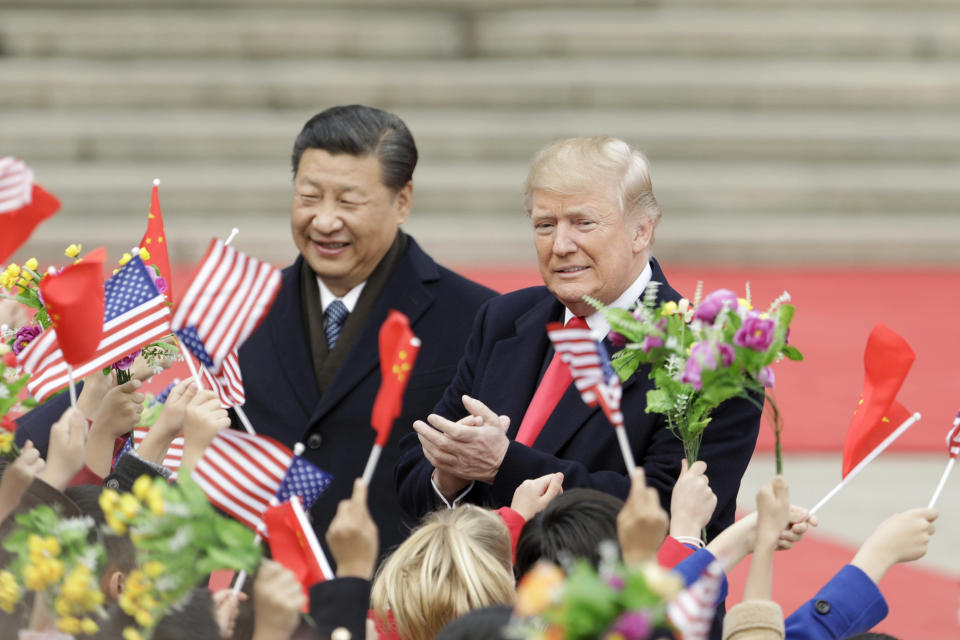Economist says U.S. 'is trying to have its cake and eat it too' in trade war
U.S.-China trade talks are expected to resume this week in Beijing, but one expert worries that Trump’s vacillating stance on tariffs makes it look like the U.S. is “trying to have its cake and eat it too.”
Trump told reporters last week that he was thinking of keeping the tariffs on China for a “substantial period of time” until he decides that they have enforced the terms of the deal.
“The President puts those tariffs on supposedly to earn concessions, with respect to some very non-numerical questions about trade — intellectual property, regulations with respect to inflowing investment,” Joseph Minarik, former chief economist at the Office of Management and Budget during the Clinton administration, told Yahoo Finance’s The Ticker (video above).
But “what we now are hearing… is the notion [that] the U.S. is trying to have its cake and it too — get the concessions and also keep the tariffs on,” he added. “That does not seem to be an agreement that both sides can accept. That’s a little bit worrisome. Is it negotiating tactic? Is it just bluster intended to get those concessions?”
And as tensions heat up, top trade official Clete Willems, who served as the lead negotiator for the U.S., is reportedly leaving the White House.

“It is … a very awkward situation”
In the meantime, negotiators from both sides have continued to work on a 150-page agreement through video calls.
On intellectual property — a major sticking point — almost 30 pages of text have been created, U.S. Trade Representative Robert Lighthizer told lawmakers recently.
But Trump officials have downplayed the likelihood of a forthcoming deal, signaling concerns with China’s pushback on U.S. demands.
“It is of course, a very awkward situation,” said Minarik.
But “I would be most afraid of miscalculation on trade,” he added. “Usually in the past [during] trade negotiations, you’ve got bluster, but people are trying to find a solution where each side can give a little, get a little, and walk away from the table gracefully.”
An analyst from Eurasia Group previously forecasted a 35% chance of talks breaking down earlier this month, citing “risk of major frictions” developing once the U.S. and China move into the implementation phase.

‘Tariffs are paid by US manufacturers, US consumers’
Trade tensions began in March last year, after the U.S. slapped a 25% tariff on all steel imports, as well as a 10% tariff on aluminum imports.
China retaliated with tariffs of its own on various products — from soybeans to pork to aluminum — which then sparked a tit-for-tat trade war between the two economic giants.
“These tariffs are paid by U.S. manufacturers, U.S. consumers,” Mercatus Center at George Mason University Senior Research Fellow Christine McDaniel told Yahoo Finance. “The effects are broad-based, but we are hearing that especially the smaller, medium-sized manufacturers are taking the brunt of it right now.”
Aarthi is a writer for Yahoo Finance. Follow her on Twitter @aarthiswami.
Read more:
Analyst: There's a 35% chance U.S.-China trade talks break down
Trump’s farmer bailout just hit $7.7 billion – but 'it no way makes us whole'
Follow Yahoo Finance on Twitter, Facebook, Instagram, Flipboard, LinkedIn, YouTube, and reddit.
